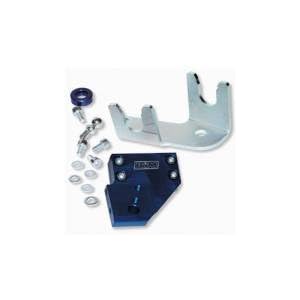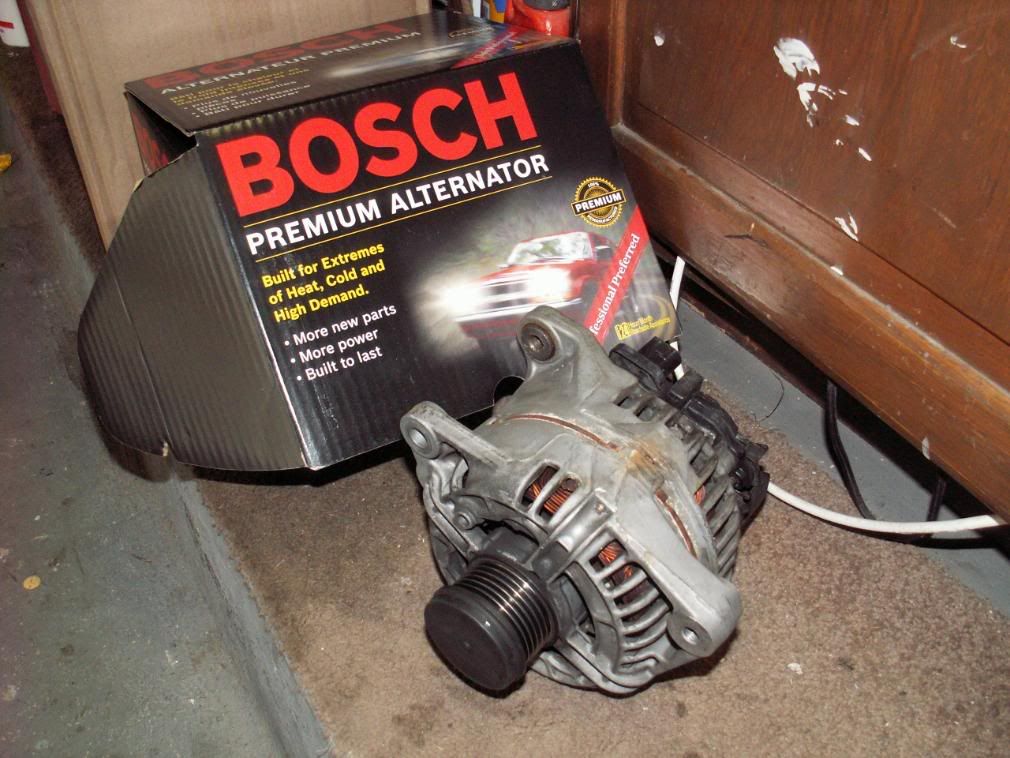Welcome to RennTech.org Community, Guest
There are many great features available to you once you register at RennTech.org
You are free to view posts here, but you must log in to reply to existing posts, or to start your own new topic. Like most online communities, there are costs involved to maintain a site like this - so we encourage our members to donate. All donations go to the costs operating and maintaining this site. We prefer that guests take part in our community and we offer a lot in return to those willing to join our corner of the Porsche world. This site is 99 percent member supported (less than 1 percent comes from advertising) - so please consider an annual donation to keep this site running.
Here are some of the features available - once you register at RennTech.org
- View Classified Ads
- DIY Tutorials
- Porsche TSB Listings (limited)
- VIN Decoder
- Special Offers
-
OBD II P-Codes - Paint Codes
- Registry
- Videos System
- View Reviews
- and get rid of this welcome message
It takes just a few minutes to register, and it's FREE
Contributing Members also get these additional benefits:
(you become a Contributing Member by donating money to the operation of this site)
- No ads - advertisements are removed
- Access the Contributors Only Forum
- Contributing Members Only Downloads
- Send attachments with PMs
- All image/file storage limits are substantially increased for all Contributing Members
- Option Codes Lookup
- VIN Option Lookups (limited)
-
Posts
8,594 -
Joined
-
Last visited
-
Days Won
190
Content Type
Profiles
Events
Forums
External Paint Colors
Downloads
Tutorials
Links Directory
Collections
Store
Posts posted by JFP in PA
-
-
Unfortunately, that has proven to not be correct. There have been several "number ranges" bandied about for this over the years, and ultimately all have come up short. The only proven way to know for sure which bearing is in a 2005 engine is to pull the flywheel and look for the 22MM center shaft nut
-
 1
1
-
-
Have you tried clicking on the "Documents" tab on the blue banner at the top of this page?
-
All manual gearboxes make some level of noise, how much is akin to “beauty being in the eye of the beholder”. Some seem to find fault where there really is none, others it would seem could miss a nuclear weapon detonation. That said, we have seen several cars that were louder than most, all for the same reason: Wrong gear oil. Switching them back to the OEM fill usually solved the problem.
-
P 0420 and 0430 are codes for low three-way catalytic converter conversion on both banks. The system is looking at the O2 sensor readings before and after the TWC and not liking what it sees. Problem is that it would be very unusual for both TWC’s to crap out simultaneously. Five separate test sequences should be run in order to see if the cat is bad or the problem lies elsewhere. As the TWC’s are expensive, it would be worth getting the tests run by a competent tech.
-
Two things to consider; first obtain and add a bottle of coolant system infrared dye, then run the car for a day. Second, pressure test the system while looking around with a infrared inspection light in a dimly lit area; where ever the leaks are, you will see a bright fluorescent color from the dye.
Most shops are fully capable of doing this for you and the procedure will find all external leaks quickly.
-
I did that. It looks more like tea than hot chocolate. Any idea where I should look to see what is causing it? Is it unsafe to drive?
Thanks for the help!
Is it clear or murky? Are there any signs of oil drops floating in it?
-
Take a turkey baster and pull out the contents of your surge tank into some sort of glass container; if it is cloudy and looks a lot like hot chocolate, or multiple layers, you have an intermix condition. Regardless of the color, coolant without oil in it will be clear...........
-
Depends upon how much you can fabricate yourself. The list is quite formidable with many fixtures being single purpose, and includes RMS and IMS tooling, cam timing equipment, special tools to hold the rods while putting the cases together, etc. You can easily spend more than a few quid getting ready to do one of these engines.............. If you can find one of the early printed OEM manual sets, they list the required tooling and fixtures.
-
The six speed weighs in at around 175 lbs, the five speed a little less. If the car is on two or four jackstands set at the proper locations, the car will not move when it is taken out.
-
 1
1
-
-
11S is still available but Porsche put out a TSB saying they were switching to CHF202 and that it was backwards compatible. And the Bonus is that last time I checked the 202 was a little cheaper than the 11S.
You are correct that the 202 is compatible (they are only slightly different in viscosity), but the TSB came out at a time when the 11S was unavailable to buy (a Pentosin decision), but that was subsequently reversed and the product is available again. My Pentosin suppliers had jacked up the price for the11S when supplies dwindled (some cars do not like the viscosity difference, particularly in colder climates), but pricing has also reverted to normal.
-
Along with the clutch (pressure plate and disc), throwout bearing, all new fasteners, IMS, RMS, check the flywheel for twist, and do the AOS while it is out in the open.
-
Messing around with damaged cooling systems on these cars has worse odds than Russian roulette. There is a poster on another site outraged because shortly after having a car serviced, he had and overheat complete with a flashing cooling light, but still drove the car home. Now he is in the market for a new engine that exceeds the resale value of the car and is griping about suing the shop that did the work. Nevertheless, as he inexplicably drove the car with the light flashing, I would be willing to bet any legal action would go nowhere.
At the first sign of cooling system problems, shut the car off and call a flatbed; the tow will end up being the cheapest thing involved in getting the car back on the road………….
-
Also be aware that bottoming out the nose on your car can also crack the radiator mounting "ears", causing leaks, and forcing you to replace the radiators.
-
P0506 is usually associated with a sticking idle air control valve, which bleeds air into the intake to control idle speed conditions; sort of “controlled vacuum leak”. The IACV can often be cleaned of accumulated crud and placed back into service, but that does not always work and replacement becomes necessary.
That said, considering your vacuum booster issues, you should also be checking it to be sure you do not have rust out problems causing a vacuum leak there that is upsetting the IACV.
-
On my '01S coolant ran low twice within 100 miles after 000's without even topping up. No leaks in expansion tank or anywhere under car. Coolant indicator light flashes at normal temps occasionally.
Help!
Pull the spark plugs and look at them; one or more may exhibit a very clean look. If they do, run a leak down test those cylinders; you may have a cracked head.
-
11S is available again, even at most NAPA stores.................
-
I believe Loren is correct; the problems with the “under the car” short shifter was that it was “infinitely adjustable”, which ended up meaning there was one way to install it correctly and an infinite number of ways to screw it up. Because of the way it worked, it also had multiple fasteners and adjusters that tended to come loose, usually at the most inappropriate time.

Not one of B&M's better moments..............
-
Porsche does not use fault code P0460.
Best check the car with Durametric, a PST2, or Porsche PIWIS tester.
Check here
http://www.permoveo....he/Default.aspx
I have to agree with Loren on that code. The factory OBD II diagnostics manual code lists for a 2001 Boxster does not use that number, nor does any Porsche using the 5.2 or 7.2 DME. I do not know where that site gets its info from, but I would recheck the car with a proper system to confirm the actual code(s)
-
Will the Durametric reset the Airbag light on a 986?
Yes.
-
There is a small threaded bushing in the rear mounting flange of the alternator that moves slightly forward when the bolt is tightened, clamping down on the bracket. If you thread a bolt into that side (item #7 in Loren's DIY), leaving it loose, and then tap the bolt with a dead blow hammer, the bushing will release the mount and the alternator can be removed (after removing the bolt). You can see the bushing in this photo on the rear "ear" of the alternator, near the Bosch box:

-
 1
1
-
-
Replacing the M96 water pump has been written up on multiple sites, with some variations due to model year, etc. It is pretty straightforward. Do a search, you will probably get more data than you really need…………
-
Sounds like the pump is already dead and needs to come out. Do not run the car in this condition as the pump could fail and cause catastrophic engine problems.
-
Just about everyone on Earth, except for Porsche, sells the voltage regulator; it is a common inexpensive part number to Audi, VW, MB, and even some Fords. Replacing the regulator is usually an easy fix for many alternator issues short of bad bearings, and one Hell of alot cheaper as well. If nothing else is wrong with the alternator, just do the regulator.
-
Without the reading the codes, it is always a bit of a crap shoot; but your car is displaying the type of faults often associated with either a battery or alternator issue. Get the car scanned for codes, have the battery load tested and check the voltage of the alternator under load, you could just have a voltage regulator on the way out (pretty common).
-
 1
1
-





2000 Boxster Owners Manual
in 986 Series (Boxster, Boxster S)
Posted